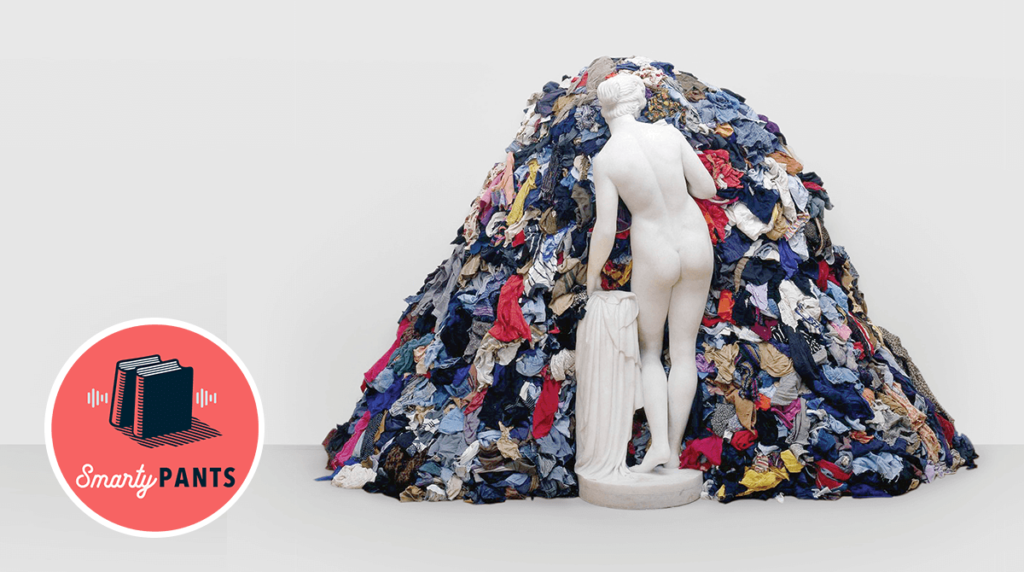Fashion Kills
How our hunger for more clothes is killing the environment and exploiting workers

To mark New York Fashion Week, longtime style reporter Dana Thomas is ripping the veil off the industry. Her new book, Fashionopolis, is an indictment of the true costs of fashion—like poisoned water, crushed workers, and overflowing landfills—that never make it onto the price tag of a dress or pair of jeans. Between 2000 and 2014, the annual number of garments produced doubled to 100 billion: 14 new garments per person per year for every person on the planet. The average garment is only worn seven times before being tossed—assuming it’s not one of the 20 billion clothing items that go unsold and unworn. It’s no surprise, then, that the fashion industry accounts for at least 10 percent of global carbon emissions and 20 percent of all industrial water pollution. Though the industry employs one out of every six people globally, fewer than two percent of them earn a living wage—more than 98 percent of workers are not only underpaid, they also toil in unsafe, unsanitary conditions. But change is underfoot: retailers are shifting their supply models, circular and slow fashion are on the rise, and new technology is making the manufacture of new and recycled fabrics cleaner. Dana Thomas joins the podcast to explain what will be required to fix a broken system.
Go beyond the episode:
- Dana Thomas’s Fashionopolis: The Price of Fast Fashion and the Future of Clothes
- Why donating secondhand clothes to developing countries can actually prevent development—and kill local textile industries
- What is “slow fashion”? The New York Times explains
- Some of our host’s favorite sustainable fashion Instagram accounts to follow: @aboubakarfofana, @ajabarber, @notbuyingnew, @tomofholland, @katrinarodabaugh, @little_kotos_closet
- Martha Stewart teaches Clothing Repair 101
What can you do? Dana Thomas’s Tips
- Launder your clothes less frequently: Try to break the habit of tossing a pair of jeans into the wash after wearing them once. Get several wears out of clothes before washing, spot-clean small stains, and use cold, short washing cycles. You’ll reduce water usage, cut household expenses and elongate your clothes’ lifespans—a win for the planet, your wallet, and your laundry hamper.
- Shop your closet: Before buying those new jeans or another black T-shirt, look inside your closet to see if you already have these pieces. Or try gathering some friends for a clothing swap party.
- Rent your wardrobe: There’s a growing number of websites and programs today that make it easy to rent high-quality fashion, tailored for your fit. Renting will keep your wardrobe fresh and ward off so much waste. You’ll be more daring in your choices—becoming more fashion forward—since you aren’t investing in the items and keeping them forever. If you do fall in love with a look, you can always buy it.
- Take a Second Look at Secondhand: For a long time, consignment shops were filled with passé, dowdy clothes—but no more. Over the past two decades, as Hollywood stars began walking red carpets in vintage clothing, there’s been a revolution in the secondhand market. Today, you’ll find great deals on stunning, quality garments in thrift shops and on consignment websites.
- Consign Online: Have any gently worn garments lurking in your closet that you never seem to wear? Consider consigning them online. You’ll make some money back, and your clothes will have a second life. Many online consignment sites will give you credit for other items, so you too can refresh your wardrobe.
- Skip the plastic bags: You may be in the habit of taking your canvas tote on a grocery run—but don’t forget to take it along when shopping for clothes, as well.
- Repair and re-wear: Rather than tossing out stained or torn garments, think about overdyeing, or camouflaging with cool embroideries. Such treatments personalize items—making them one of a kind!—and give them a longer life.
- Pick up a needle yourself: The maker revolution has brought home-knitting, sewing, and needlework back into vogue. Join a knitting circle or sewing bee, or take classes to learn the craft, and make or repair your own clothes.
- Lead with you best foot forward: Instead of throwing away your gently used shoes, seek out a local charity organization that can repurpose the shoes for communities that may need them.
Tune in every week to catch interviews with the liveliest voices from literature, the arts, sciences, history, and public affairs; reports on cutting-edge works in progress; long-form narratives; and compelling excerpts from new books. Hosted by Stephanie Bastek. Follow us on Twitter @TheAmScho or on Facebook.
Subscribe: iTunes • Feedburner • Stitcher • Google Play • Acast
Download the audio here (right click to “save link as …”)
Have suggestions for projects you’d like us to catch up on, or writers you want to hear from? Send us a note: podcast [at] theamericanscholar [dot] org. And rate us on iTunes! Our theme music was composed by Nathan Prillaman.

